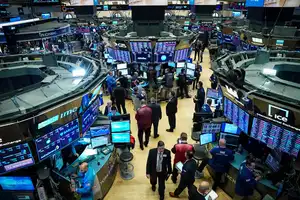When discussing the largest asset classes in financial markets, most people may think of stocks, bonds, or forex. However, there is one market that surpasses them all, valued in the hundreds of trillions of dollars – the swap market.
Swaps, a type of derivative, derive their value from other assets or determining factors such as interest rates, currency rates, commodity prices, and more. They allow firms, institutions, or governments to exchange one risk for another, and credit default swaps are just one small segment of this vast market.
Unlike exchange-traded assets, swaps are not traded on exchanges but are put together by larger traders on the over-the-counter market. As a result, the public is generally less familiar with swaps, as these deals are primarily traded by institutions and not individual investors.
Since most individuals do not directly engage in swaps trading, their awareness of the swap market, how it operates, and its significance is relatively limited. However, for larger players in the financial industry, swaps are an essential tool for managing and transferring risks.
Why Swaps Markets Matter
The swaps market holds significant influence over the global economy due to its immense size, often surpassing several times the world’s GDP in notional value. Notional value represents the underlying assets’ value in a trade and gives us an idea of the market’s scope and reach.
Interest rate swaps make up a substantial portion of the swap market, where only the differences in interest rates are exposed to the market, not the principal amounts. Despite the distinction between these risks, there is still an interplay between them, with interest rates impacting bond prices.

The vast notional amounts involved in swaps signify the broad and substantial nature of this market, affecting a significant portion of the money supply, as money is primarily created through borrowing in the market.
While individual investors may not directly engage in swap contracts, the efficient flow of capital facilitated by swaps plays a crucial role in our economy. Swaps allow for the transfer of risk from those less willing or prepared to bear it to those better equipped to handle it, contributing to the prosperity of the overall financial system.
Interest Rate Swaps
Interest rate swaps are the largest and most common type of swaps in the financial market, involving the exchange of fixed rates for variable rates. These swaps provide parties with the flexibility to customize contracts according to their specific needs.
For borrowers, the choice between fixed and variable rates carries distinct risks. Fixed rates offer stability but may result in paying a risk premium, while variable rates come with the uncertainty of potential interest rate fluctuations.
Lenders, too, face risks based on the type of interest payments they receive. Some may be more equipped to handle one type of risk over another and may seek to trade income streams with other institutions. For instance, they can swap an income stream based on variable rates for one based on fixed rates, enabling more efficient borrowing and providing borrowers with the option to choose their preferred rate.
Interest rate swaps play a vital role in the financial ecosystem, allowing parties to manage their risks effectively and ensuring a smooth flow of capital in the lending and borrowing process.
Subordinated Risk Swaps
Subordinated risk swaps serve as a form of insurance for financial institutions by transferring various business risks from one party to another. These swaps involve exchanging different types of risks through contracts, with the risk itself being swapped for a premium. This can include credit risk, management risk, legal risk, and more.
Among these swaps, credit default swaps are the most prominent, where one party agrees to indemnify the other against credit defaults. While these swaps operate smoothly most of the time, they can lead to significant losses during times of massive credit defaults, such as during the 2007 mortgage crisis.
Unlike traditional insurance, credit default swaps do not require an insurable interest, allowing anyone to take on this risk. Trading these contracts in the market enhances market efficiency, but it also requires diligence on the part of those with substantial exposure to manage risks effectively in the face of systemic risk. This underscores the importance of regulatory measures to prevent potential market disruptions.
Other Types of Swaps
The currency swap market is a significant financial market where institutions exchange cash flows in one currency for another. Unlike interest rate swaps, currency swaps involve exchanging the type of currency used for payments, allowing institutions to better manage their payment preferences.
Commodities can also be swapped, despite the presence of the futures market. Crude oil is a common commodity involved in swaps due to its volatility. Equity swaps transfer the risk of holding shares to another party in exchange for a cash payment at an agreed rate, enabling investors to retain their equities without liquidating them.
Total return swaps offer a way to hedge entire portfolios by swapping the portfolio’s total return for a specified payment, shifting the risk to another party. Various other types of financial swaps involve exchanging different payment types, with one party accepting additional risk for a premium payment.
Although swaps have received criticism, they play a vital role in financial markets and contribute to a more efficient risk allocation. Swaps provide the means to manage risk more effectively, but it is essential to exercise sound risk management and exercise good judgment to maintain a balanced approach to risk.




